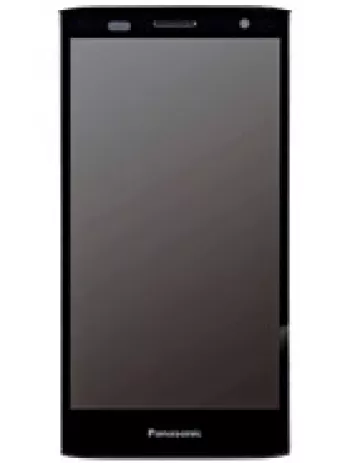
Overview of Panasonic A500
The Panasonic A500, released in the second quarter of 2004, represents a piece of mobile phone history. This feature phone is a product of an era before smartphones dominated the market. Despite its discontinuation, the A500 provides insight into mobile technology trends of the early 2000s and illustrates how far we've come since then.
Design and Build
The Panasonic A500 boasts a compact design typical of feature phones from its time. Its dimensions are 84 x 47 x 19 mm, and it weighs 89 grams, making it a lightweight option compared to today’s standards. It was built with a focus on functionality and simplicity, featuring a 128 x 128 pixel display that supports 65K colors. The TFT screen was quite advanced for its time, although relatively small compared to modern displays.
Body and Simplicity
With a minimalist design, the A500 uses a mini-SIM and lacks a touch screen, offering only physical buttons for navigation. The phone's body reflects the durability and straightforward utility intended for devices in that era. Available in classic black and white, the design aesthetic prioritized practicality over glamour.
Display Features
Although the display lacks the sophistication of modern full-HD screens, the A500’s 128 x 128 pixel resolution was sufficient for the basic tasks it supported. The square 1:1 ratio display was vibrant with its 65K color capacity, allowing users to enjoy simple images and animations.
Network and Connectivity
The phone supports GSM technology, working on 2G bands for GSM 900 and 1800. This means the device was primarily used for basic tasks such as calling and texting, as advanced data services weren't widely available at that time.
Limited Connectivity
In terms of additional connectivity options, the Panasonic A500 did not include modern features like Bluetooth or WLAN. It did, however, come equipped with an infrared port, which was a popular feature for wireless data transfer between devices back then. There was no support for EDGE, which limited data transfer speeds even further.
Battery Life
The Panasonic A500 was powered by a removable Li-Ion battery with a capacity of 760 mAh. This was adequate for the limited functionalities of the phone, providing up to 210 hours of standby time and 4 hours and 30 minutes of talk time. Users appreciated the removable battery feature, allowing easy replacement when necessary.
Memory and Storage
The phone's storage capabilities were limited by today’s standards. It did not include a card slot for expandable memory, and the internal storage was mainly for contacts and basic data. Users could store up to 300 contacts in the phonebook and utilize features such as photo call, which was a notable feature back then.
Call Management
Call management was straightforward; users could access records for the last 10 dialed, received, and missed calls. This basic functionality was quite sufficient for the phone’s primary purpose of voice communication.
Sounds and Ringtones
The A500 did not feature a loudspeaker, which was a limitation for playing sounds aloud. However, users could download polyphonic ringtones, a popular feature in the era to personalize their devices. Although it lacked a 3.5mm headphone jack, it aligned with the primary usage scenarios of that time, being more focused on calls rather than media consumption.
Communication and Multimedia
Despite being a feature phone, the A500 was equipped to handle basic multimedia messaging services (MMS) alongside SMS. This functionality provided users with the ability to send simple multimedia messages. Additionally, it supported a WAP 2.0/xHTML browser, allowing limited internet browsing capabilities.
Games and Applications
The A500 came pre-installed with one basic game and allowed users to download additional games, enhancing its entertainment value. The inclusion of Java provided the basis for running additional applications, although this was quite limited in scope and capability compared to today's standards.
Additional Features
Despite its limitations, the A500 catered to the emerging demand for mobile technology through its basic features. While modern conveniences like GPS were absent, the device addressed fundamental communication needs efficiently. It offered a few downloadable games and supported Java, allowing a degree of user customization and additional functionality.
Conclusion
The Panasonic A500, with its fundamental features and solid build, serves as a reminder of the early 2000s mobile landscape. It highlights the evolution from basic feature phones to the complex smartphones we use today. Although the A500 is now discontinued, it remains a notable piece of technology that marked a transitional phase in our journey toward modern mobile communication.
Main Features of Panasonic A500
- Compact Dimensions: 84 x 47 x 19 mm, lightweight at 89 g
- Display: TFT screen with 65K colors and resolution of 128 x 128 pixels
- Memory: Stores up to 300 contacts with photo call capabilities
- Infrared Port: Allows for data exchange with compatible devices
- Messaging: Supports SMS and MMS for versatile communication
- Browser: WAP 2.0/xHTML enabled for basic internet access
- Java Support: Allows for running Java-based applications and games
- Battery Life: Offers up to 210 hours on standby and 4 hours 30 minutes of talk time
Panasonic A500 Drawbacks
- Limited to GSM technology only, lacking support for newer networks.
- No EDGE support for faster data transfer.
- Discontinued status; may pose difficulty in finding support or replacement parts.
- No expansion slot for external memory cards.
- Limited phonebook capacity with only 300 entries.
- No integrated camera for taking photos or videos.
- Absent loudspeaker; makes hands-free communication challenging.
- Does not support standard 3.5mm headphone jack.
- Lack of Bluetooth or WLAN for wireless connectivity.
- No GPS positioning available.
- No built-in radio feature.
- Basic TFT display with low resolution (128 x 128 pixels).

View Also
More Phones
All Rights Reserved +14266 Phones © Mobilawy 2025

























